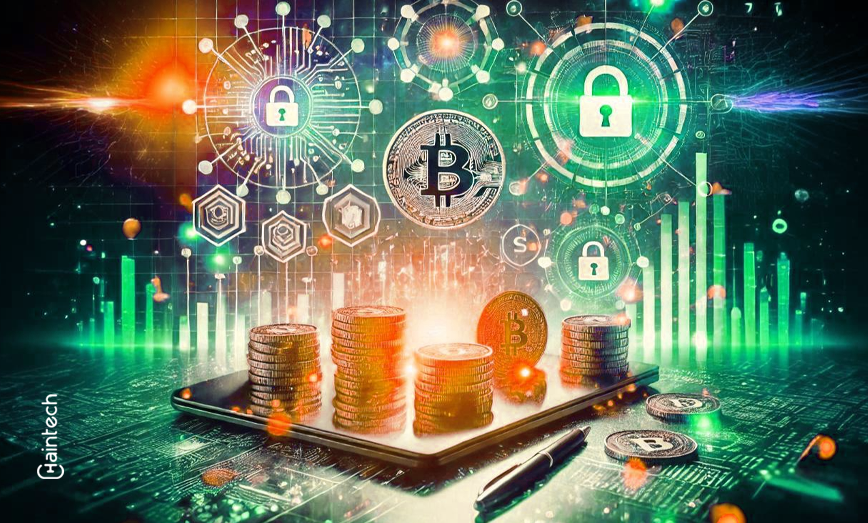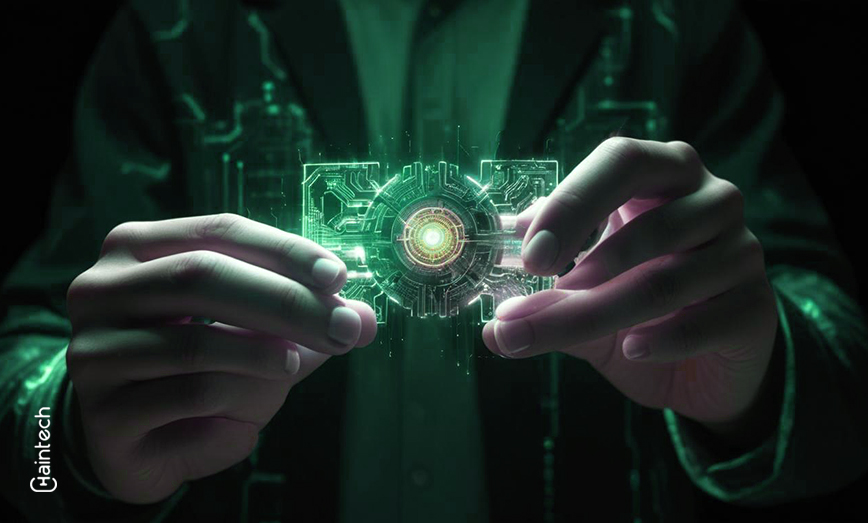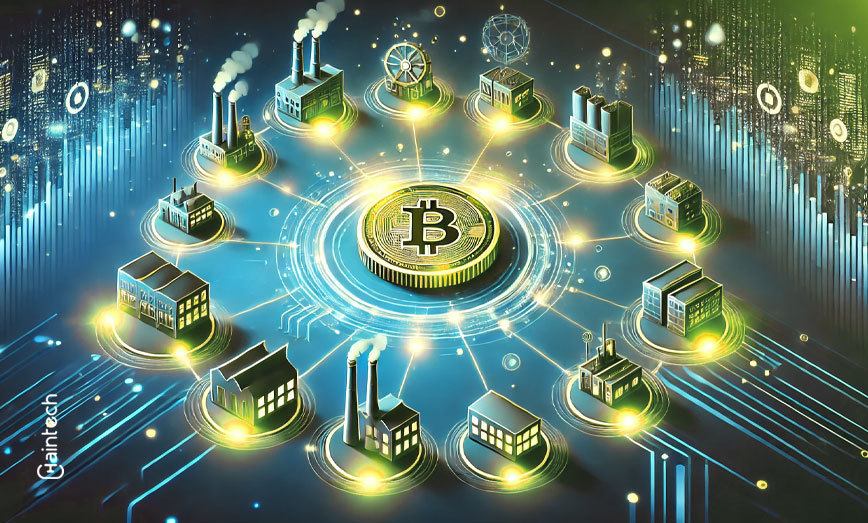Financial Sector Embraces Tokenization: 5 Transformations

Tokenization is changing the financial sector. It’s transforming how we invest, pay, and even secure our money. How does this actually work? Do you have any questions in this regard? Tokenization is the process of taking an asset—it can be a house, a stock or even a piece of art—and creating a token on the blockchain.
Each token corresponds to ownership in a fractionalized portion of that asset, which means, for instance, that it is possible to have only a part share of that asset rather than owning the whole asset.
Tokenization spreads quickly across financial sector, especially with more people wanting fast, safe transactions and flexible investment choices. Big institutions and regular investors are noticing its power to simplify and make finance simpler and safer.
The power of tokenization: Safer, cheaper transactions and inclusive investing
- How tokenization boosts security and reduces fraud.
- Why transactions are faster and cheaper.
- How does it open up investing to more people?
What is tokenization in financial sector?
Tokenization in financial sector can be defined as the process of creating digital tokens from a physical or financial asset and recording them into the blockchain format. These tokens allow people who don’t own the whole asset to buy or sell a portion of it. Tokenization opens doors for people wanting a safe, flexible way to invest or transact.
Tokenization maximizes security and reduces fraud risks
Probably the greatest disadvantage of tokenization is improved security. When shopping online, for example, your credit card details or banking information is kept in all sorts of databases and systems and can easily be stolen. With tokenization, however, your details are not stored at all but rather replaced by a code, a random number, which has no value whatsoever if stolen.
What is the significance of this? In traditional transactions, data breaches happen when hackers break into databases holding sensitive information. Tokenization removes this risk because your data isn’t stored as it is but exists as a secure token. This change is huge for banks, online stores, and anyone who processes payments. More secure transactions mean less worry about fraud and identity theft.
Think of it as using a hotel keycard instead of your house key. Even if someone gets the card, they can’t access your home. The token works the same way, keeping your data safe.
Did you know?
Tokenization not only boosts security but also protects your data during transactions by replacing it with secure digital tokens that hackers can’t use—even if they intercept them!
Faster and smoother transactions
Waiting days for a payment to clear is frustrating. Tokenization speeds up this process, especially for international transactions. Normally, cross-border payments require approval from multiple parties. Tokenization simplifies this by using blockchain, which verifies transactions in seconds or minutes.
Here’s how tokenization speeds things up:
- International Payments: Send money across borders instantly, with no middleman.
- Securities Trading: Buy and sell stocks faster without waiting for market hours.
- Real Estate: Tokenized property lets you buy a part of a building in seconds.
- Loans and mortgages: Verify assets as collateral almost instantly.
- Insurance Claims: Process claims faster with tokenized policies and assets.
This information is available in the public domain and can be accessed by all; every time there is a transaction, it is updated in the blockchain, which is precise, effective, and also economical.
With tokenization, you will find a less expensive verification option, and the number of parties required for the transaction is also decreased, making it more quick and efficient for users.
Tokenization makes opportunities available to all citizens
For centuries, only wealthy investors could partake in high-value assets like real estate or art. But now, tokenization is changing this because it allows for fractional ownership. This means that a wider range of people can invest in expensive assets especially in financil sector. No need to be a billionaire anymore to possess a small fraction of someone’s most expensive property or artwork.
Table: Benefits of Tokenized Assets
| Asset | Example | Traditional Barrier | Benefits of Tokenization |
| Real Estate | Office Buildings | High purchase price | Fractional ownership, low entry |
| Art and Collectibles | Fine Art | Only for the ultra-wealth | Buy a share of valuable items |
| Precious Metals | Gold, Silver | Hard to store and trade | Easier access as digital tokens |
| Equities | Stock Shares | Expensive individual shares | Fractional shares available |
| Intellectual Rights | Song Royalties | Complex valuation and trading | Simplifies trading and ownership |
Investors can easily invest in those limited assets, allowing them to increase asset diversity without the need for huge capital. This change presents new avenues of investment, especially to the small investors.
Lower costs with blockchain technology
But tokenization is not just relevant in accelerating the pace of transactions; it is also relevant in reducing the cost of carrying out transactions. The basic reason for this is that normal business transactions have a long chain of intermediaries, such as brokers or banks who charge a fee for transactions. But with tokenization, blockchain technology cuts out the middlemen, reducing costs.
For instance, real estate deals often include brokers, agents, and banks, all of whom take a cut. However, if a property is tokenized, transactions can happen directly on the blockchain. This setup means fewer fees, faster processes, and less paperwork. The blockchain’s role in storing information also eliminates the need for manual record-keeping, saving even more time and money.
Using blockchain for tokenized transactions is like shopping directly from the source. You save time, avoid extra fees, and know exactly where your money goes.
New markets and diverse assets
Tokenization isn’t just about changing old systems; it’s creating entirely new markets. Today, almost anything can be tokenized. You can buy a digital token of a song’s royalty rights, invest in a luxury car, or even purchase a fraction of a patent. With tokenization, the possibilities for investments are expanding.
These new markets offer a unique chance for diversification. Investors can now only include digital tokens in an array of classes of assets, which implies that they do not have to depend on the normal stock and bond asset classes. Visualize a portfolio composition where real estate, fine arts, tangible assets such as gold and silver, as well as digital assets’ tokens, represent a balanced portfolio in the absence of real estate.
It also enables investors to invest in assets that could not be invested in before, leading to new perspectives on the problem of wealth creation.
Did you know?
However, investing in tokenized assets such as real estate, art or even sports contracts is now possible thanks to democratization and disintermediation of the investments that were previously available only to the elite.
Tokenization makes cross-border payments a walk in the park
Cross-border payments in the past were full of delays and a lot of charges were incurred because we were required to convert the currency, hire other parties and go through a security verification procedure. Tokenization alters this by employing blockchain to provide a safe and efficient means of moving money from one point to another without regard for distance.
When a transaction is tokenized, it doesn’t require manual verification from multiple intermediaries, which is often the cause of delays. In contrast, the blockchain confirms the transaction during that instant, thereby making both time and expense impulses. That technology can be used as a solution by persons sending money across borders time and time again.
Picture being able to make an international supplier payment or pay a buddy located overseas at the touch of a button and be certain the money will be timely and securely delivered. Thus, through tokenization, cross-border payments are made so easy that they have broken forth the barriers that hitherto made global financial transactions too costly and impossible for the ordinary person.
Tokenization: A new way to change the infrastructure of the financial world
Tokenization is not a fad; it is a revolution to the financial sector. There are many people who would like to create, integrate or use it because it has the potential to enhance security, speed, accessibility and reduce cost. The new technology of tokenization has come along with a lot of excitement, and it is evident that it is not going anywhere.
It is no wonder why people love tokenization so much because it enables users to engage in fast and efficient transactions that are both safe and easy. Not only does tokenization make this viable, but it’s also helping it to become the standard. Be it for diversification of assets or simply to have quicker transactions, tokenization is paving the way.
Did you know?
Thanks to the deployment of blockchain technology, tokenization has reduced the time it takes to make cross-border payments that used to take several days to mere seconds.
FAQs
1. What exactly is tokenization in financial sector?
It’s turning physical or financial assets into digital tokens for secure, flexible transactions.
2. How does tokenization protect against fraud?
Tokenization replaces sensitive data with tokens, which are useless to hackers if intercepted.
3. Can I invest in expensive assets through tokenization?
Yes, tokenization allows fractional ownership, making it easier to own a share of high-value assets.
4. Does tokenization make transactions cheaper?
Absolutely. By reducing intermediaries, tokenization lowers fees and speeds up transactions.
5. What types of assets can be tokenized?
Everything from real estate to art, precious metals, and even intellectual property can be tokenized.









